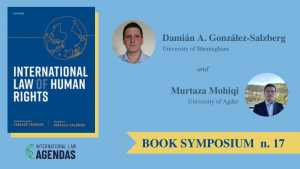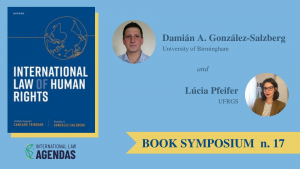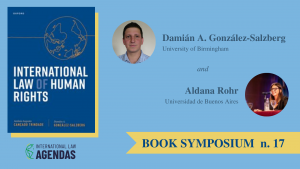Une once de jurisdiction vaut plus qu’une livre d’or (an ounce of jurisdiction is worth more than a pound of gold): Maïa Pal opens Jurisdictional Accumulation (CUP, 2021) with this motto from a 15th-century jurist from Visé. If an epigraph is supposed to situate the theme and place the book in context, the choice could hardly have been better. The practice of assuring long-term trade and capital flow could be more profitable and sustainable than the mere accumulation of finite metals. Pal excavates the early modern European empires’ expansion and shows how jurisdiction meant great wealth and power. She tells a fascinating and timely story of the genesis of early imperialism and complicates our understanding of its relationship with capital and legal practices.
The book is rather ambitious. It covers about three centuries, different locations, and a rich and complex literature on history, international law, and international relations. She analyses the Castilian, French, Dutch and English/British empires (spoiler alert to the Brazilian reader: the Portuguese empire is left out, unfortunately). The thick legal and historical research is analysed through Marxist scholarship, mainly the Political Marxism tradition of Robert Brenner and Ellen Meiksins Wood, and also IR scholars such as Benno Teschke.
Pal questions the traditional diplomatic historiography on what we understand today as extraterritoriality. This view looks at embassy chapels in cities such as London, Paris, Amsterdam and the practices of permission/exception of state power in a domestic/foreign to affirm how the territory is crucial to modern sovereignty and empire practices. To Maïa Pal this literature on extraterritoriality focuses too much on the 19th century and understands early practices as exceptions on ambassadorial privileges. When emphasizing territoriality and sovereignty, diplomatic history neglects private and maritime jurisdictional practices of authority, often performed by consular jurisdiction. Pal looks to other places such as ‘national’ ale houses and ports and substate actors usually unseen or unimportant for traditional literature. From the entanglement of public and private actors and state and merchants affairs emerges a more complex and nuanced history of extraterritoriality and its role in the empires.
Central to Pal’s argument is the idea of ‘jurisdictional accumulation’. She defines it as “a conceptual device that reveals how certain actors of imperial expansion were extending, transporting, and transplanting the authority of their sovereign, while also, when possible, improving their own social status” (Pal 2021: 3). It regards the actor’s capability to generate claims, rights, titles and functions, and to benefit herself and the empire she represents. Through extensive primary and secondary sources, Pal maps three practices of jurisdictional accumulation. Extensions of authority are the legal incorporation of internal or contiguous land and its inhabitants. All the empires she analyses have experience with the extension of lands, and albeit she deals with it, this mode is not at the centre of the book. Pal is more interested in the other two practices: transplant and transport. Transplant of authority is the exercise of jurisdiction at colonies and other non-contiguous territories through the reproduction of jurisdictional institutions. Its dominium is exercised by direct rule over people and territory. Transport is the outsourcing of authority to others to conquer, own and trade on behalf of the sovereign. Usually, it is driven by commercial interests, and its dominium is focused on ownership or property. While the Castilian rule in the Americas is the utmost case of transplant of authority, the Dutch and English empires are better understood as transport. The French empire was more complex and combined a dual strategy of jurisdictional accumulation.
I believe Pal’s book makes two significant contributions. The first is the notion of jurisdictional accumulation itself. It provides theoretical and historical lenses through which one can assess different experiences regarding the intertwining relations between capital, law, and empire during the beginning of imperialism and state formation. By documenting the centrality of private or substate actors, Pal fragments the standard state-centric narrative of imperialism. These are actors usually forgotten and downplayed both in international law and IR historiography. We can see her argument in full display at chapter 5, where she analyses how consuls transported authority through jurisdictional functions and produced power and wealth to themselves, their crowns and companies such as the English Levant Company, the Dutch Directorate and the Chambre de Commerce et d’Industrie de Marseille. The great part of the primary data Pal collected for the book is presented in this chapter.
Secondly, Maïa Pal brings much-needed historicization to a burgeoning Marxist literature of international law. Since the 1990s, international lawyers have turned to Marxian and Marxist contributions and enriched the discipline with discussions on ideology, hegemony, class struggle, and imperialism. A ground-breaking monograph is Between Equals Rights (2005), by China Miéville. The book has received both praise and criticism, but it has not gone unnoticed. Influenced by Evgeny Pashukanis’ commodity-form theory, Miéville argues that international law is structurally determined by imperialism, and it will invariably favour the ruling class and its interpretation of the rule of law.
According to Pal (2021: 81), Miéville “fails to account for pre- and non-capitalist legal agency or for legal relations occurring during the process of transition as autonomous from or contesting processes of capitalist transition”. With Miéville’s “consequentialist” approach, one could not fully grasp distinct empires’ judicial strategies and contexts. By bringing Political Marxism in, Pal subverts the structuralist explanation and emphasises social agency and class struggle, while historicising the formation of the early inter-state order and its connection with private wealth. Pal’s book is more helpful when one looks for the nuances of imperialism and how different legal practices were connected with capital in different locations.
One issue that maybe could be explored in further research is the reaction to jurisdictional accumulation practices, especially from the colonies. Even though Pal’s focus was on European empires, I finished the book wondering about the experiences of the ones who dealt with imperialism from the other side. It would be fascinating to bring into this narrative the reactions to jurisdictional accumulation practices from the colonies and post-colonial societies, and place them also as actors in this story. It is hard to say if this would change the book’s argument, but it would surely enrich not only how imperialism operated but also how it was received and maybe even resisted. Regardless of this, the book is a welcome contribution to legal historians concerned with early extraterritoriality and the Marxist tradition akin to a historical approach.
Maïa Pal’s reply can be found here
-

Professor da Universidade Federal de Goiás / Professor at Federal University of Goiás





